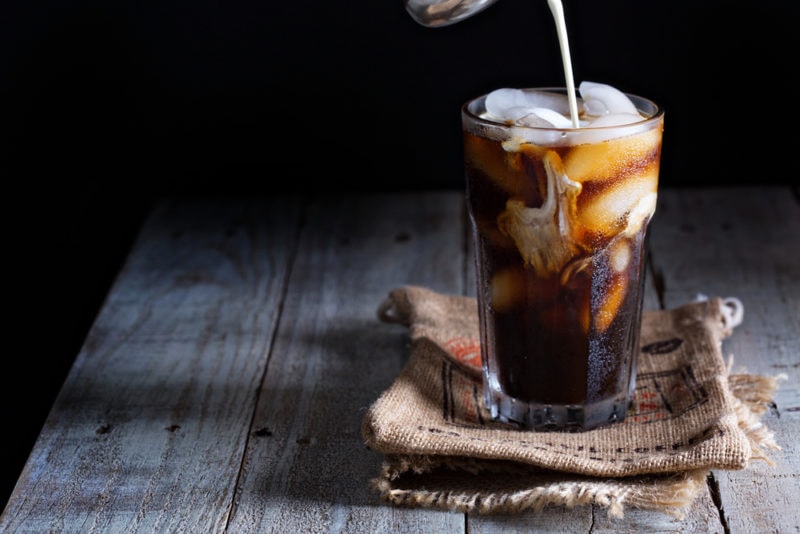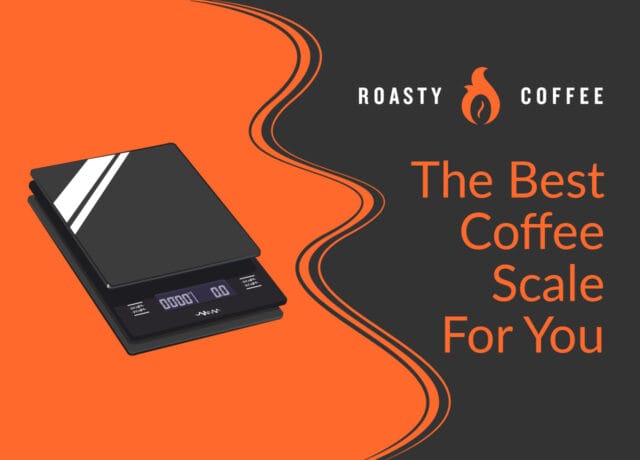Any self-respecting coffee lover has certainly heard of Indonesian coffee. But did you know that there are actually different profiles and processes that you can expect form island to island?
A great example of the variation across the different landmasses of this island group is Sulawesi Coffee.

Stick around to find out more about what goes into this unique Indonesian coffee as well as what to expect from your brew and where you can buy some high-quality beans.
Sulawesi 101
Let’s start with what, or rather where, Sulawesi is. For those of you who have not been in a geography class in a hot minute (or at least one that taught you something more useful than the 50 states), Sulawesi is a part of Indonesia. Now, you probably do know that Indonesia is a multi-island country; this portion is a highly irregularly shaped piece directly south of the Philippines (across the Celebes Sea).
It is one of the four Greater Sunda Islands and consists of four peninsulas. Topographically, this island is ru Dark Roasted and mountainous, so it is often easier to travel through the surrounding seas and gulfs than by land. Furthermore, it is divided into 6 provinces: North Sulawesi, Gorontalo, Centeral Sulawesi, West Sulawesi, South Sulawesi, and Southeast Sulawesi.
On Coffee
Like many places in the world, there isn’t much of a concrete story to how exactly coffee arrived in Sulawesi in the first place. However, we do have a couple guesses. Chances are the coffee plant was brought over to Indonesia in the 17th century by the Dutch.
Over time, the coffee plants thrived thanks to the favorable environment and eventually they spread to other Indonesian islands including Sulawesi. However, this region’s coffee remained relatively unknown on the global marketplace until the late 1970s.
Coffee Culture
Recently, there has been a push within Sulawesi to develop a stronger cafe and coffee culture to connect locals with the products they produce. This is becoming increasingly common in areas that have historically exported the vast majority of their products.
By introducing cafe culture into areas like Toraja, farmers are able to cut out middle men who often underpay them for their products and instead profit off of and with the local economy.
Best Sulawesi Coffee
Unfortunately, because Sulawesi coffee is lesser known and not a high priority for this particular region, it can be difficult to find legitimate sources from which to buy it. However, until the industry there picks up a bit more, we do have a few recommendations for you to check out.
Volcanica Toraja Sulawesi White Eagle Coffee
Our first suggestion is from Volcanica so it is sustainably sourced, Fair Trade, and Rainforest Alliance Certified. These Toraja Sulawesi White Eagle beans are medium roasted and come with a smooth flavor and sweet aftertaste.
This coffee is organically grown and harvested from original Toraja trees that are primarily found in remote Ethiopia (commonly considered the birthplace of coffee). These trees are over 250 years old and are shaded by jungle canopy.
The beans themselves look relatively small, but the flavor they pack is definitely worth it. They are kept completely separate from all the other beans to preserve the integrity of this unique variety.
CoffeeBean Direct Sulawesi Kalossi Coffee
Next up we have Sulawesi Kalossi coffee from CoffeeBean Direct. The plants are grown in high-altitude volcanic soils near the village of Kalossi. These beans are slow roasted to a nice, light roast.
They have a low acidity, which is a great find for a light roast bean (especially for people who have sensitive stomachs). Also, the brew has a rich, earthy body with berry flavor notes. If you prefer something a little darker, they do offer it as a Dark Roast.
Toraja Sulawesi White Eagle Coffee
This is another Toraja ” White Eagle” offering. Like the other white eagle beans, these make for a nice, smooth flavor and sweet aftertaste. It is a medium roast and includes earthy notes as well as hints of strawberry and cocoa.
Also, like the Volcanica these beans are Fair Trade Certified, Shade Grown, and Rainforest Alliance Certified. The plants are grown at a level of 4,300 feet and are wet hulled like most Sulawesi beans.
Flavor Profile
While there are some regional variations depending on what provinces, there are some commonalities you can expect across the island. The plant varieties include Bourbon, Pacas, and Pacamara and the harvest period is between July and September.
As far as aroma, you can expect a heady, earthy flavor with the occasional hint of almond and cocoa. The bodies tend to be full and heavy with a distinctive richness complimented by a low acidity. Furthermore, flavors can vary from earthier tones with spicy, nutty, or smokey notes to fruitier ones with some natural sweetness.
The last element of Sulawesi coffee flavor is developed by their processing. Most coffee from this region is wet-hulled, which we will go into later.
Regional Run-Down
Fun Fact: While the vast majority of the coffee in Indonesia is Robusta, as much as 95% of the coffee produced in Sulawesi is Arabica. So you know you can expect some high quality beans out of this particular region.
Toraja
This is the biggest growing region in Sulawesi. It has volcanic soil and is dominated primarily by highlands.
White Eagle
The most popular Toraja variety is White Eagle coffee. This is a type of Arabica that is similar to the early growth Typica plants from Ethiopia. They are over two centuries old and the beans harvested from them are considered the creme de la creme of Sulawesi coffee.
Because they are organically and somewhat haphazardly grown, there isn’t a very large yield each year. Usually there is only between 300 and 600 bags produced, so this is a relatively rare coffee in the grand scheme of beans.
Also, not only are there fewer amounts of these beans, it is also difficult to process and export. Due to the remote growing locations, the only way to transport them is via horseback through the mountainous regions. This journey could take as long as 4 days.
As a result, these beans are typically kept completely separate from other beans to preserve its authenticity.
Kalossi
Kalossi is the name of a small coffee-centric village. Both the cultural and economic systems of the area are driven by the coffee industry, making it the other big coffee producer in Sulawesi, alongside Toraja.
Mamasa
The specialty coffee industry in this area hasn’t really picked up to the same degree as the other two. It is at a slightly lower altitude, so it is of a similarly lower quality, much like the rest of the lower altitude beans.
Into Indonesia
As we mentioned before, Sulawesi is one island within the archipelago of Indonesia. While Sulawesi coffee specifically hasn’t become a prominent feature on the specialty coffee scene, Indonesia as a whole is far from obscure.
In fact, it is the 4th largest coffee producing country in the world. They make over 1.5 billion pounds of coffee and export about 65% of it, so chances are you’ve seen it around as it makes up over 8% of the total coffee on the market.
Don’t believe us? A few of the more well-known Indonesian coffees are Sumatran, Bali, and Java. Sound familiar? We thought so. Other areas of the country put more emphasis on their coffee industry as it is the primary economic force there. However, in areas such as Sulawesi other crops, like rice, remain the industry leaders, so coffee takes a back seat.
Nonetheless, the coffee from Sulawesi is a great example of how even under more lax circumstances, a region can still produce high-quality, ethically sourced coffee products. They are just a bit harder to come by.
What Makes it Special?
Environment
One of the biggest contributors to the high quality of many Sulawesi coffees is the altitude at which the coffee is grown. Additionally, it has a similar climate to popular Indonesian coffees, such as Java and Sumatra, so the temperature and rainfall are favorable for growth. It tends to stay warm and moist around 70 to 80°F (mid to low 20°C).
Much of this region has heavy forest canopy to shade the coffee trees, which is also preferable to intense sunlight.
Growers
As important as the environment around coffee beans are the people behind them. Most of the coffee in Sulawesi is produced by small farmers who use rather haphazard planting methods. Thus, production can vary pretty wildly.
Interestingly enough, there is very little governmental regulation or oversight for Sulawesi coffee, despite it being one of Indonesia’s biggest exports. Thus, production is extremely localized.
This makes for a double edged sword. Production is much more lax which can benefit some farmers. However, the lack of regulation can prove to be a detriment to both producers and consumers as working conditions and quality aren’t really monitored.
Each farmer will usually process the harvested beans themselves before selling them to local collectors for export.
Processing
As always, the method used to process the beans is also rather important to flavor but even more so to mouthfeel. In this case, a rather controversial method called wet hulling tends to be the go-to.
What is wet hulling?
Wet hulling is not the same thing as your typical washed or wet processing that is favored among coffee connoisseurs, though it is similar in some ways. It is also called giling basah and is a popular method across Indonesia, not just in Sulawesi.
First, you should know that there are 3 basic layers that surround a coffee bean: the fruit or cherry, the mucilage, and the parchment. The removal of the cherry and mucilage is essentially the same as wet processing. They are pulped to remove the cherry, then fermented overnight and washed to remove the mucilage.
Next, the wet parchment covered beans are left to sun dry for 2 or 3 days, which is much shorter than the several week long drying that would need to occur for your usual wet processing. They reach an internal moisture content of about 20-24% rather than 11%.
The extra moisture leaves the beans damp and delicate as they go into machinery to have the parchment removed. As a result there is a high chance of accidental damage to the beans or incomplete removal of the parchment. They are then sun-dried and fermented for a few more days before being exported for roasting.
Why wet-hull?
The wet hulling is done primarily out of necessity. The high humidity and temperatures make sun drying the parchment and beans completely before hulling them nearly impossible. To do so would mean astronomically slowing an already rather erratic production rate.
The effect on flavor?
The primary affect of using the wet hulling method is creating very heavy bodied brew. The brews are strong, rich and almost syrupy but may lack sweetness. If done properly there shouldn’t be a ton of inconsistency, though, unfortunately, there often is due to a lack of proper equipment.
However, Sulawesi and Sumatra are two Indonesian regions that have been noted as taking more care to ensure consistency and quality in their production.
Coloration
Another thing that really sets Sulawesi coffee apart from other bean is the coloration. Even darker roasts tend to be noticeably lighter than other regional varieties. That means you should be a bit
How to Brew It
The rich, often earthy tone of Sulawesi coffee lends itself to espresso brewing methods. The low acidity makes for dark, smooth brews whether you are pulling from an espresso machine or pouring from a Moka pot.
Additionally, if you are more of a paper filter person, you could likely have some success with an Aeropress. However, this may lighten this distinctly heavy brew up too much for some tastes.
Su-long, Wesi You Later
There you have it! Despite being one of the lesser known regions in the coffee powerhouse of Indonesia, Sulawesi coffee may actually surprise you with its unique flavor and feel. Just make sure you do your research on where you are buying. You don’t get bamboozled with bad coffee or contribute to unethical chains of production.
From the idiosyncratic growing to the unusual processing, Sulawesi coffee is certain to give you a different caffeination experience. If you like heavy, rich brews that are hardy alone and stand up well to creamy additions, this might actually be your new favorite origin.
Happy Caffeinating!









